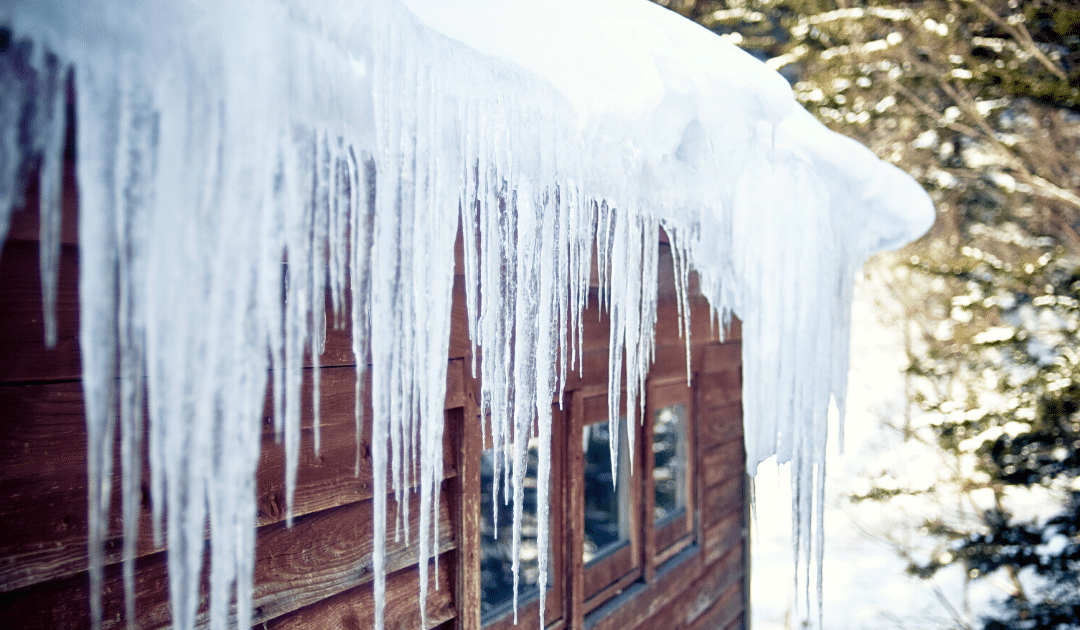
by California Casualty | Homeowners Insurance Info, Safety |
Snow build-up packs a double-punch threat to your roof – and home. As snow piles up on your roof, it creates two threats over time. One is a heavy snow weight which, if left unchecked, can pose a risk of roof collapse. The other is the formation and persistence of ice dams.
Ice dams form when warm air rises inside your house and warms the roof, melting water that then runs down the eaves. Since eaves are colder, it refreezes there and creates a solid ice block, which then backs up future run-off water behind it. The more snow you have, the more run-off will accumulate. Also, the greater the temperature difference along your roof and the more time the ice deposits have to grow, the bigger your ice dam problems will be.
Keeping both these threats at bay requires a steady habit of keeping that snow in check.
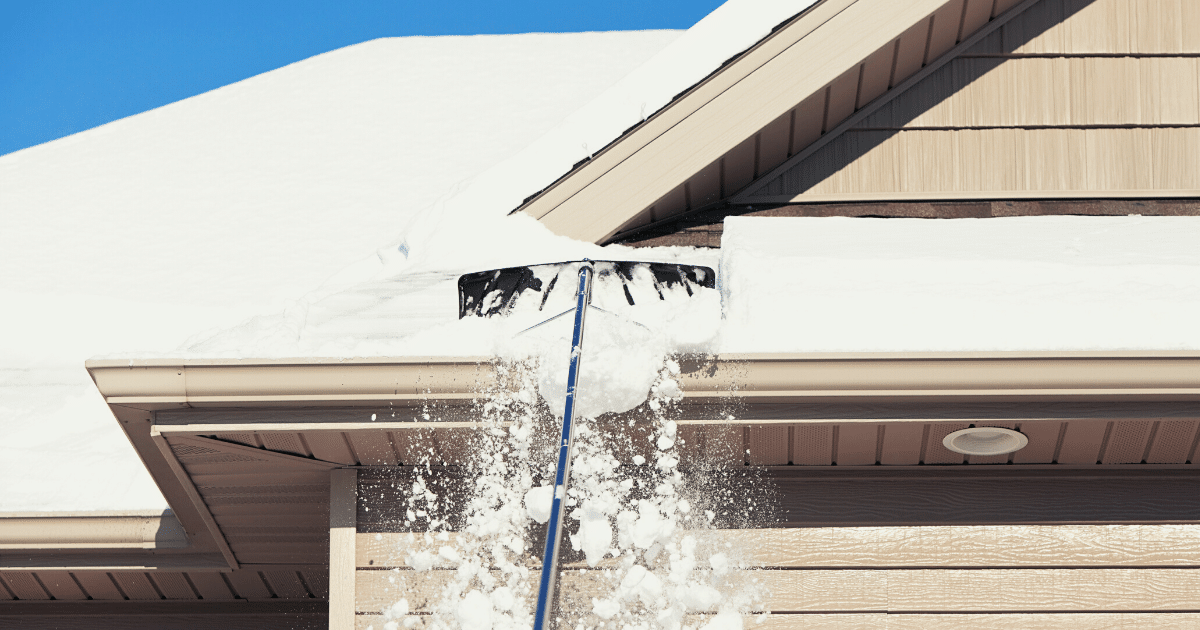
Rooftop Snow Removal
Rooftop snow is typically removed either by raking or shoveling. Your best bet as a DIYer is raking. If you live in a one-story house, you can probably do this yourself. If you live in a two-story or taller home, or you have an abundance of snow to remove, consider hiring a professional (who will most likely shovel, rather than rake). Here are some top tips for safe snow raking.
-
- Get the right rake – Look for a rake that has these important features. First: small bumpers, wheels, or rollers near the blade. These keep the blade off the roof surface, protecting it from damage. Second, the handle should have a slight bend to it. This makes it more versatile and easier to use than a straight-handled rake. Third, consider plastic over metal because it’s lighter. Finally, a telescoping feature will allow you to reach more snow.
- Buy an extension or two – If your rake doesn’t have a telescoping feature, it’s a good idea to buy extra extension poles so that you can rake as high as possible on the roof. And having an extra pole or two tucked away will be good if your main one gets bent or damaged.
- Rake regularly – Making this an ongoing task throughout the winter will help prevent build-up.
- Have a plan – It’s important to rake in a particular sequence. First, knock down any hanging icicles. Then, with a rake in hand and firm footing on the ground, work your way around the house, starting with the overhangs (which are most prone to ice dams).
- When raking, start low – Start at the bottom of the roof and work your way to the top, pulling off a foot or so of snow at a time. Be warned that starting high or pulling down too much snow could bring it tumbling down on you.
- Stand back – Give yourself some room away from the roof’s edge so that if snow dislodges, it won’t fall on you.
- Watch out for power lines – Be extremely careful not to hit any overhead lines. In fact, take an inspection walk around your house before starting to rake. Overhead lines are common in older homes.
- Think twice before salting – Salting the roof can lead to discolored shingles and dead plants or grass.
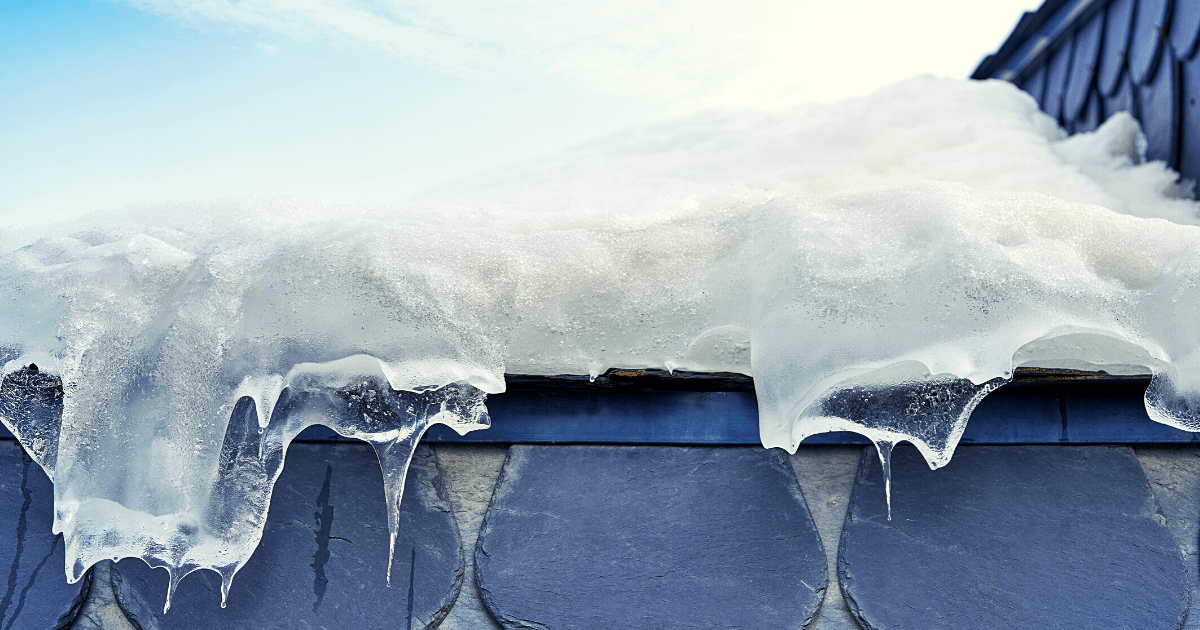
Preventing Ice Dams
Ice dams can lead to roof leaks, causing structural damage inside your home, as well as water stains, bubbling paint and wallpaper, and mold/mildew formation. Besides keeping up with snow removal (the best strategy for ice dam prevention), here are some others:
-
- Insulate your attic – This will minimize heat loss, keeping your roof cooler and melting less snow. It will also save on energy costs.
- Eliminate air leaks – Seal leaks in the attic, around the chimney, and at entry points for vents and pipes.
- Vent out the hot air – Proper ventilation will help keep heat from getting trapped and warming concentrated spots on your roof. Consider installing two motor-driven fan vents – one that draws in cold air and one that exhausts hot air.
- Turn down the heat – Dialing down your home temperature will not only help prevent snowmelt and ice dams, but also save on your heating bill. Check out our easy tips here.
- If you already have ice dams – Ice dams can do serious and expensive damage to your home – so if you have them, get them removed by a professional asap.
Preventing wintertime damage to your home saves money and headaches over time. In the case of your roof, keeping it maintained and damage-free will extend its life and protect your home’s value. Follow the strategies above and also remember – if the snow is wet, heavy, voluminous, or hardened you should hire a professional snow shoveling service. Finally, getting a pre-winter roof inspection is always a good idea, as it will surface any structural vulnerabilities or problems with your roof.
For more winter home maintenance tips, click here.
This article is furnished by California Casualty, providing auto and home insurance to educators, law enforcement officers, firefighters, and nurses. Get a quote at 1.866.704.8614 or www.calcas.com.
by California Casualty | News |
We have amazing employees at California Casualty. The Employee Spotlight is a new series aiming to highlight those talented individuals that make up our successful company culture and community. From human resource recruiters and learning and development trainers to claims adjusters, marketers, customer support specialists, partner relations, sales representatives, and beyond; each week, we’ll highlight a new team member, so you can get to know us better and see how our employees make us who we are as a company.
This edition of the Employee Spotlight will feature Strategic Account Manager, Rebecca Stumpf
Rebecca “Becky” has been with us for 16 years and works in the field for our Partner Relations team.
Let’s get to know Becky!

What made you want to work as a Field Marketing Manager for California Casualty?
To get the Field Marketing Manager position for Missouri I went through four interviews, each time I was able to get a better understanding of the California Casualty culture. I quickly came to the conclusion that the company offered more than insurance. This was a place where each employee I encountered cared about my well-being and about those they served. It felt like a perfect fit for me!
What is your favorite part about your job?
I just recently moved into a new role that has expanded my responsibilities as an account manager into states that are new to me. I’m excited to better understand the groups in those states and get to know the leadership.
I’m also working on projects that afford me the opportunity to work with more people within the Partner Relationships department, and with people from other departments within the company. We have so many amazing people working for our company, I’m excited to be in a position to get to know and learn from more of them!
I love my job for a number of reasons: my co-workers, the family feel of our company, the groups we serve – our American Heroes, the friends I have made because of this job, working from home and traveling across the country (during non-covid times).
What have you learned in your position at California Casualty?
I’m not sure there’s enough space for me to list all the useful information I’ve learned during my tenure!
Probably the most useful information I have learned is to never stop looking for opportunities to learn and grow and to create learning opportunities for those around me.
What are your favorite activities to do outside of the office?
My favorite activities are reading, gardening, hiking with my daughter, camping, and traveling with my family.
Anything else you would like the audience to know about you?
My husband and I met when we were 18 and 16 respectively; we became good friends and remained that way for 7 years before we realized that we were meant for each other. We’ve now been married for 17 years and have two kids; Calvin, who will be 14 at the end of the year, and Hazel who will be 12 in May.
Both our Moms live within one mile of us, and spend a lot of time with us hanging out at home and traveling.
We have a very loving and needy eleven-year-old German Shepard named Lily, who pretends to fiercely protect us, but is a big baby at her core.
If you want to learn more about Becky or are interested in a career at California Casualty, connect with her on LinkedIn! Or visit our careers page at https://www.calcas.com/careers

by California Casualty | Auto Insurance Info, Homeowners Insurance Info, Safety |
Often called the “silent killer,” carbon monoxide (CO) is an odorless, colorless gas that claims more than 400 American lives each year, sends 20,000 to the emergency room, and hospitalizes more than 4,000.
It is an indiscriminate killer, striking its victims when they’re unaware or asleep. This poisonous gas is produced by burning fuel in vehicles, stoves, lanterns, fireplaces, gas ranges, furnaces small engines, and portable generators. Here are tips for keeping you, your family, and pets safe from it.
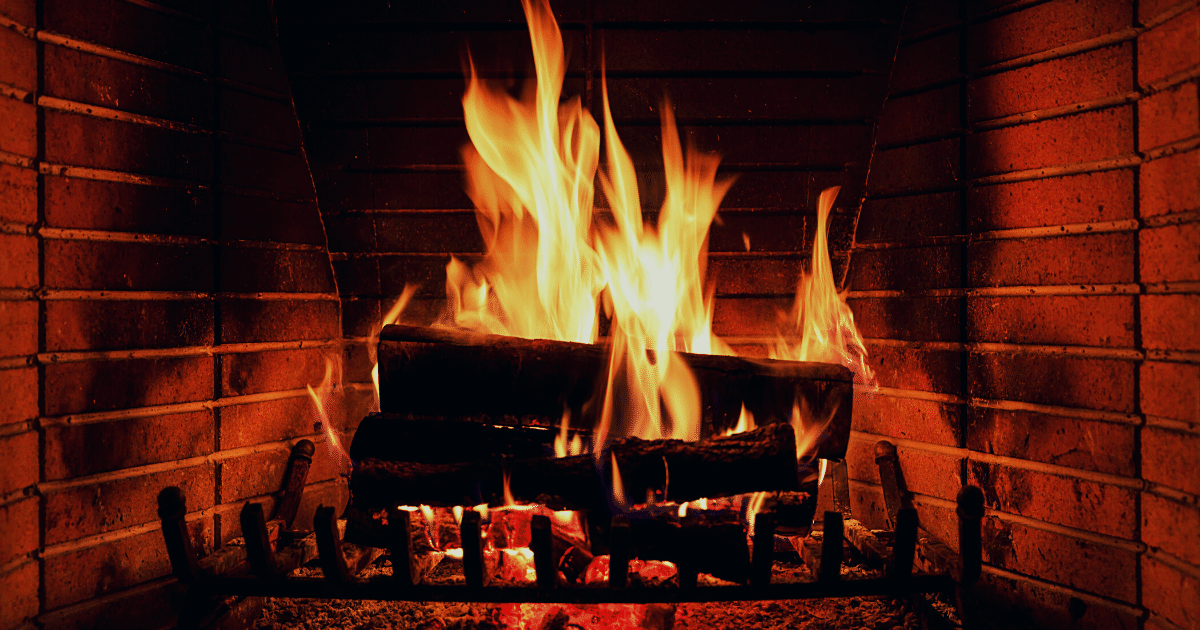
Prevention Tips For Your Home
Here are top strategies to prevent an inadvertent CO leak or exposure in your home.
-
- Install at least one battery-operated or battery back-up CO detector on each floor of your home, including the basement and garage (if it’s attached). Detectors on your main floors should be inside or directly outside the bedroom or sleeping areas.
- Test your alarm(s) monthly, replace batteries every six months and replace the units themselves every five years.
- Maintain yearly inspection schedules for your heating system, furnace, water heater, fireplace, chimney, and any other gas or coal-burning appliances.
- When buying gas appliances, only buy those carrying the seal of a national testing agency.
- Make sure all gas appliances are vented properly.
- Never burn charcoal or use a generator or portable gas camp stove indoors.
- If you smell an odor coming from your gas refrigerator, have an expert check it – the odor could indicate it’s leaking CO.
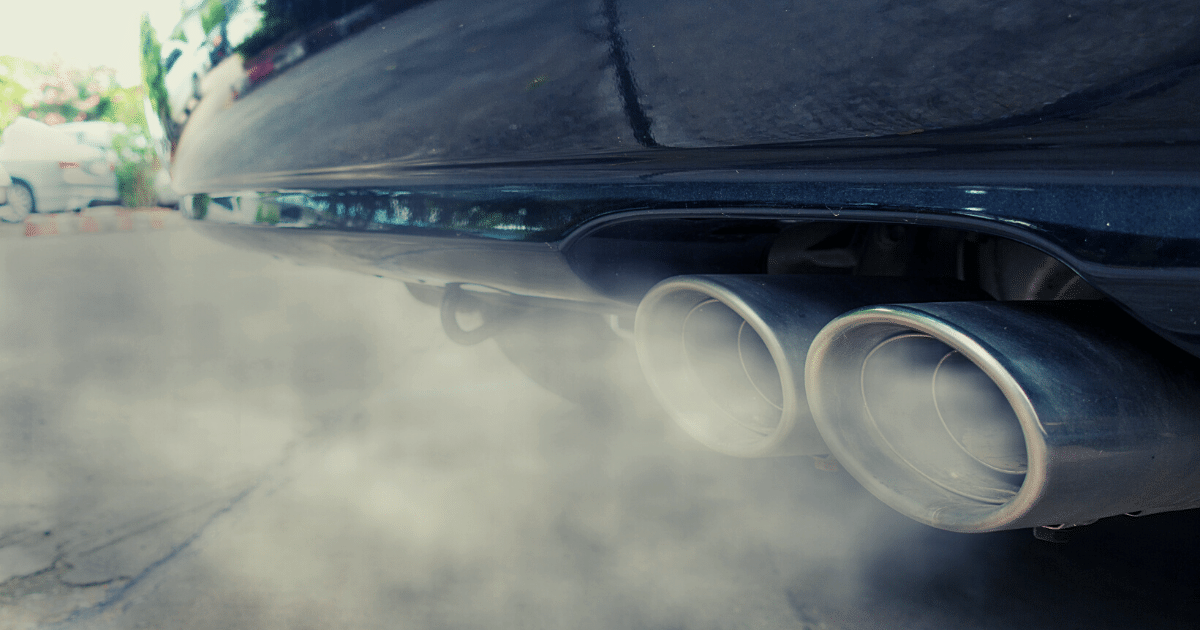
Prevention Tips for Your Car
Your vehicle actively produces CO every time you start the engine, so do the following to stay safe.
-
- Take your vehicle to a trusted mechanic yearly for an exhaust system check. Small leaks can cause CO buildup inside your car.
- Do not run your vehicle inside an attached garage, even with the garage door open.
- If your car has a tailgate, make sure you open vents or windows anytime you open the tailgate while the engine is running – if you open only the tailgate, CO fumes will be pulled into the passenger area.

Symptoms of CO Poisoning
It’s important to know that symptoms can vary in terms of severity, and often mild symptoms are mistaken for the flu (although without fever).
-
- Low to moderate poisoning results in:
- Fatigue
- Headache
- Nausea
- Dizziness
- High-level poisoning results in:
- Confusion
- Vomiting
- Loss of muscular coordination
- Loss of consciousness
- Ultimately death
If you or a family member are experiencing any of these symptoms get outside to fresh air immediately then call 911.
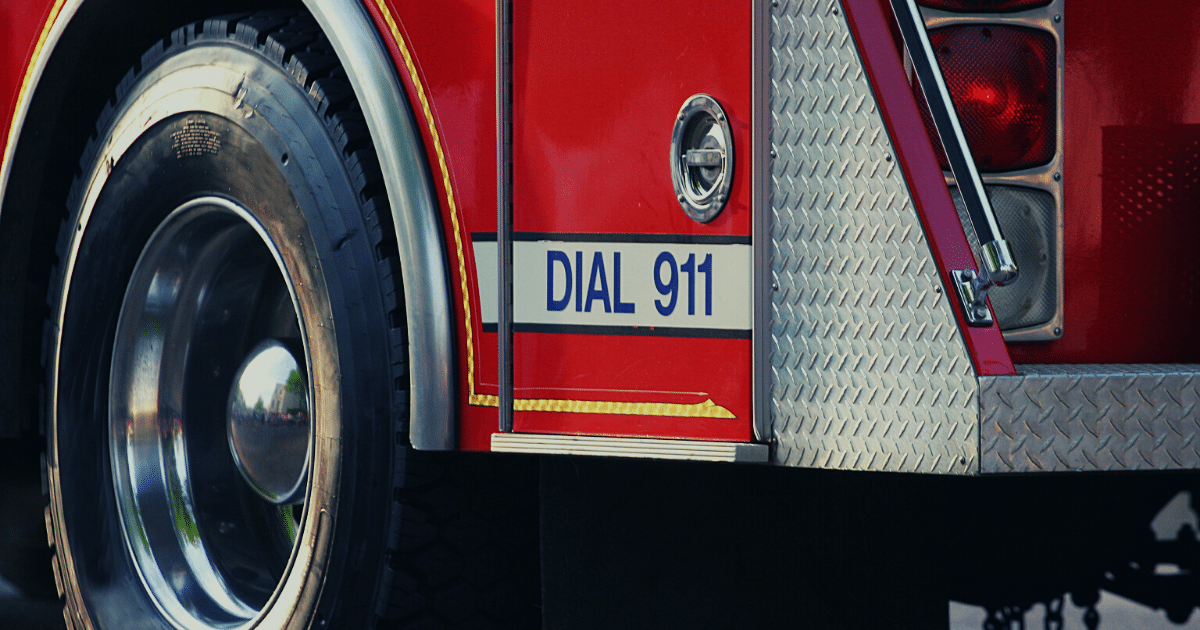
When Your Carbon Monoxide Alarm Sounds
First off, you should know – from regular testing – what the different beep sequences and alarm sounds mean. For instance, there may be different beep patterns indicating low batteries, a detector that needs to be replaced, and a true CO emergency. When you hear the CO emergency signal:
- Do not try to find the source of the leak – instead, immediately move outside to fresh air.
- Call 911, emergency services, or the fire department.
- Do a headcount for all family members and pets (do you have a family emergency plan in place?)
- Do not re-enter your home until emergency responders have given word that it’s safe to do so.
When it comes to carbon monoxide poisoning, it’s best to err on the side of abundant caution. A person can be poisoned by a small amount of the gas over a long period of time, or by a large amount during a short time. The measures above should keep both your indoor air quality and your family safe and healthy.
This article is furnished by California Casualty, providing auto and home insurance to educators, law enforcement officers, firefighters, and nurses. Get a quote at 1.866.704.8614 or www.calcas.com.
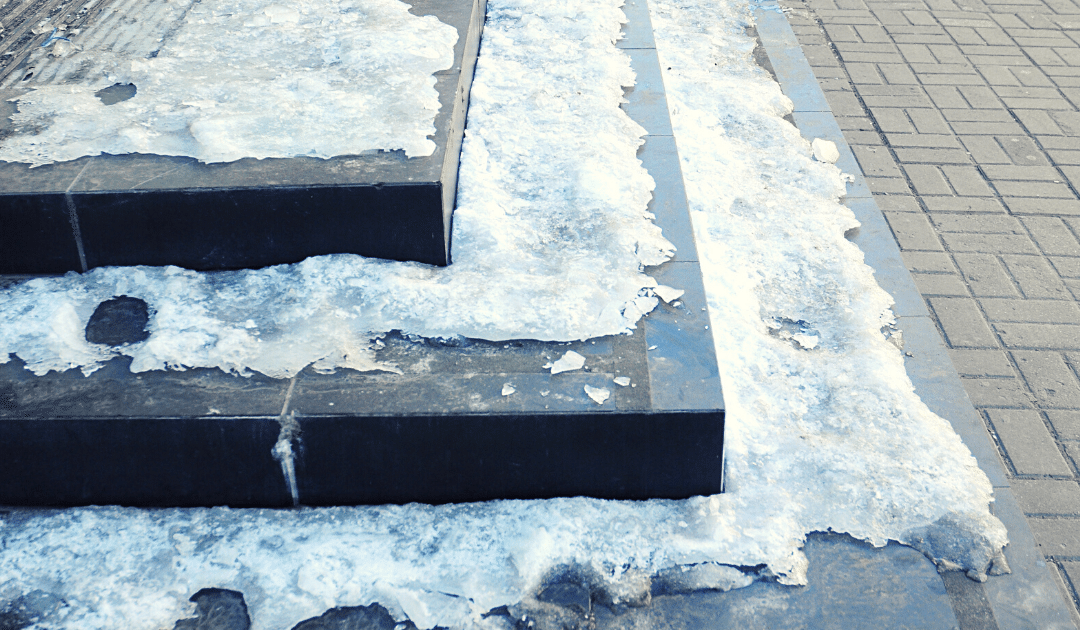
by California Casualty | Homeowners Insurance Info, Safety |
With cold weather comes extra hazards. Be on the lookout for these six common ones, so you can avoid injury, accidents, and damage to your home.
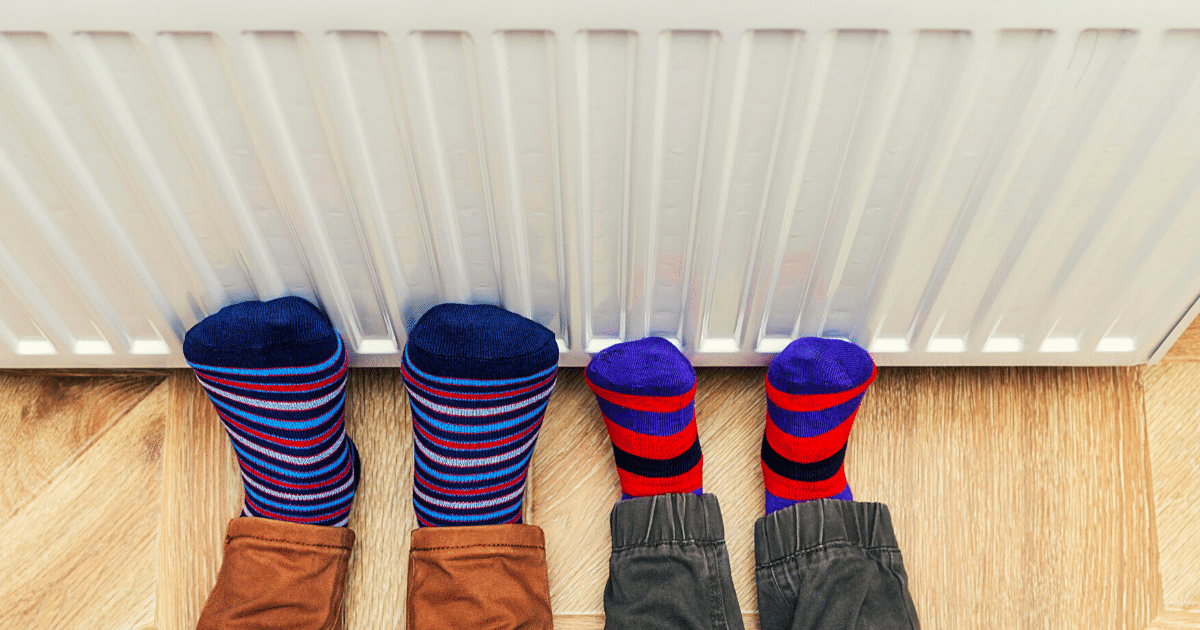
1. Unsafe Heaters and Furnaces
Make sure your heating system has been inspected by a professional (ideally well before winter arrives). This will ensure that it’s prepped for the hard work of heating your home through frigid temps and doesn’t break mid-season, leaving you scrambling for repairs. Here’s how you can keep it in working order:
-
- Wipe it down regularly to get rid of dust and debris; you can also gently vacuum it with a nozzle/brush attachment.
- Clean vents and adjust dampers in all rooms.
- Replace dirty filters as needed.
- Listen and watch for strange sounds or behavior. Do a visual check from time to time for frayed wires or other damage (pests can attack without your knowledge!).
- If you have a furnace, be sure to check the pilot light regularly (follow manufacturer’s instructions).
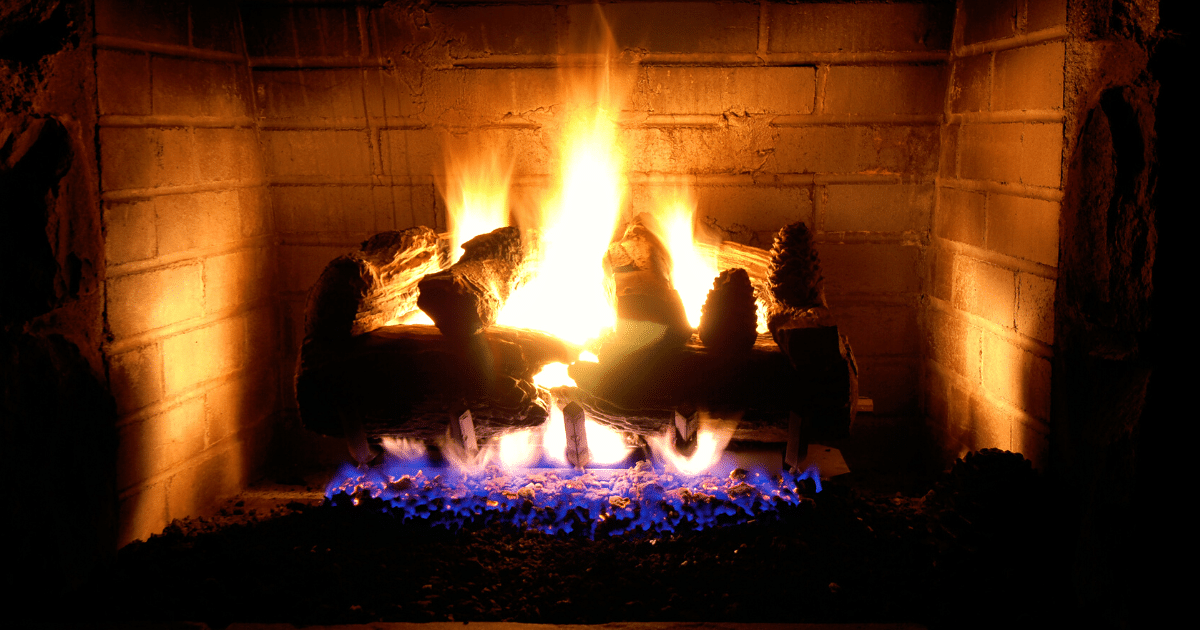
2. Fireplace Hazards
Like your heating system, your chimney, flue, and supporting structures need an annual inspection (and possible cleaning). Schedule inspections at the same time for an easy maintenance routine. Besides inspections, be sure to:
-
- Clean out ash after every fire – excess ash can reduce airflow and make your next fire dangerous.
- Never leave a fire unattended, and always make sure it’s completely extinguished before leaving it for the night.
- Use a fire screen for extra protection and consider fireplace doors if appropriate.
- Check your smoke and carbon monoxide alarms to make sure they’re working properly.
- For more indoor fire safety tips, check out our blog post.
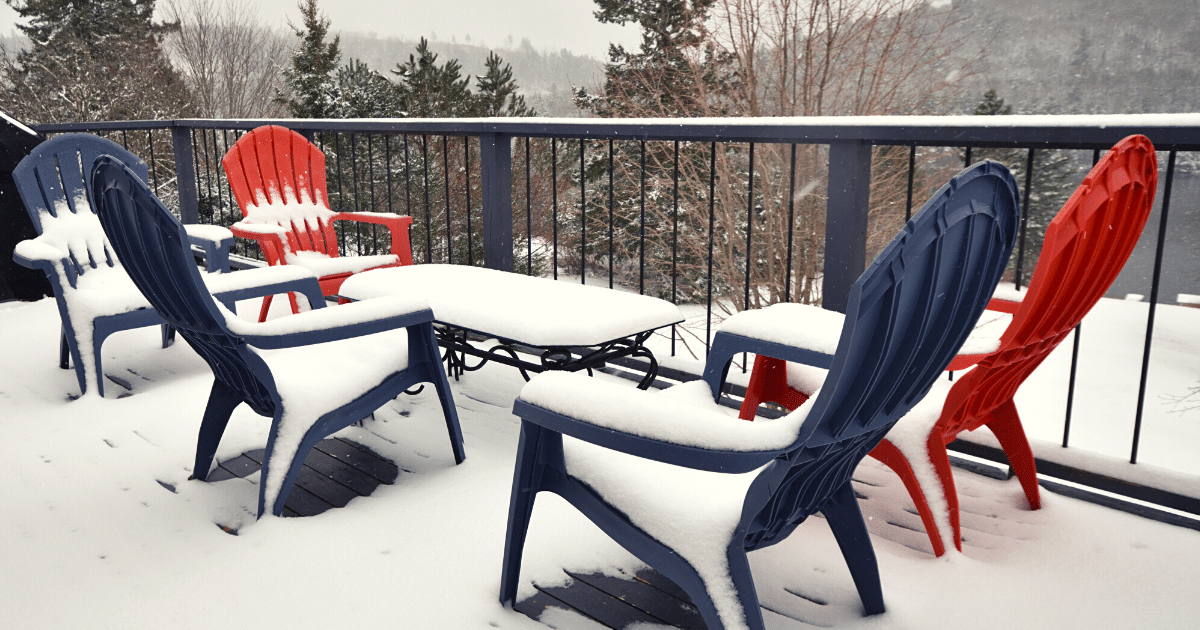
3. Porch and Deck Safety
The areas immediately surrounding your home and entrances pose a special risk for slips, falls, and other injuries resulting from ice. Protect yourself, your family, and any visitors with these precautions.
-
- Remove snow from decks, walkways, porches, and your driveway as soon as possible to prevent a melt-and-refreeze cycle (i.e. black ice).
- Consider slip-resistant finishes and coatings, deck strips, or even mats in high-traffic areas.
- Make sure handrails are secure and in good working order to provide stability when stairs are slick.

4. Gutters and Roofs
Following a theme from earlier on, it’s imperative to get your roof inspected annually so that you become aware of any problems and can get repairs done before winter sets in. Then, throughout the season:
-
- Keep gutters cleared out so that water goes down the spout where it’s supposed to, rather than finding other cracks or crannies to get into.
- If you live in a snowy area, clean gutters can also help prevent ice dams from forming and causing costly damage.
- Remove snow from your roof regularly with a roof rake.
- Use that same rake to remove any icicles that have formed.

5. Power Outage Prep
Snowstorms and freezes can easily take out power lines, leaving you in the cold and dark. Have your emergency plan and power back-up ready in case you need it. Additionally:
-
- Have a two-way radio for news concerning the outage (make sure it’s solar-powered, uses batteries, or is hand-crank).
- Have a hand-crank or solar-powered cellphone charger so you can keep in touch with family, neighbors, and friends.
- Invest in a generator, and always have flashlights, lanterns, and extra batteries on hand.
- If you don’t have an emergency kit or plan for your family, make one today.
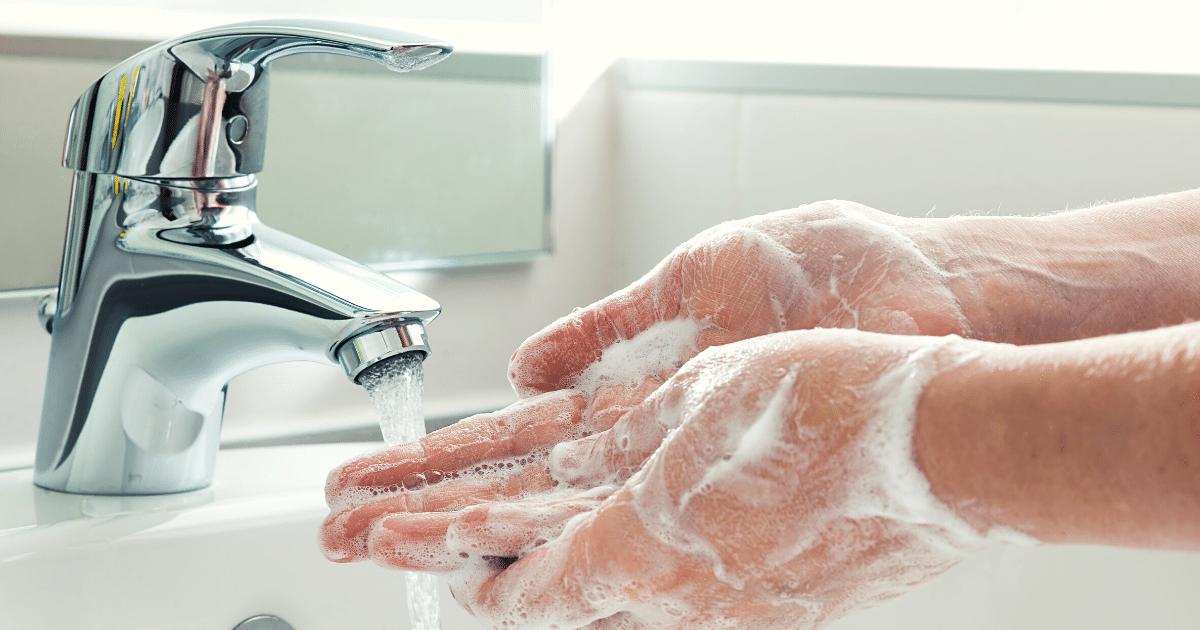
6. Germ Safety
Illnesses, including the flu, coronavirus, and others surge during winter months because we’re usually indoors and in close proximity to others. Be sure to stick to the routine precautions for COVID-19 prevention – including mask-wearing, frequent handwashing, and social distancing – to keep yourself and your family safe. Pandemic fatigue is real, but sticking to the guidelines will keep us all – including our nurses, doctors, and other health care workers – healthy until a vaccine is available.
Many times, making sure your home is prepped for winter hazards means thinking ahead in summer and fall. Keeping up with your yearly inspections can uncover problems with chimneys, heating systems, and your roof that could cause major headaches and damage right when the thermometer is plunging. Taking actions early – and keeping an eye out year-round – will give you peace of mind during the winter so you and your family can enjoy a cozy, serene and safe home.
This article is furnished by California Casualty, providing auto and home insurance to educators, law enforcement officers, firefighters, and nurses. Get a quote at 1.866.704.8614 or www.calcas.com.

by California Casualty | Peace Officers |
Today is National Law Enforcement Appreciation Day (LEAD) – a day designated to honor the more than 800,000 men and women across the country who have taken the pledge to protect and serve.
From fighting crime and saving lives to ensuring public safety, responding to accidents, and building community relations, law enforcement officers improve our communities in a million different ways every single day.
In fact, their work is so foundational to our everyday sense of safety and security that it can be easy to forget all that they do. So today, join us and millions of other Americans in showing appreciation for our officers in blue.
Here are some things you can do today and every day to show your support:
-
- Send a thank you card to your local police department.
- Wear blue in support of law enforcement today – you could also make your social media picture blue for the day, or even change it to your local police department’s logo or insignia.
- Ask your kids – and/or those in the neighborhood – to write letters to peace officers. If your kids seem interested in officers’ careers, sign them up for a mentorship or other program offered by police departments.
- Follow your local police department on social media – you’ll not only be more aware of local news and alerts, but also gain a greater understanding of all that your department deals with. And when you have a good experience with law enforcement, give them a shout-out on your page! Boosting the positive highlights the good that officers do day in and day out.
- Support officer causes and fundraising drives. Better yet, volunteer! As a civilian, you can help supplement and support officers by doing things like clerical tasks, assisting with search and rescue, reporting graffiti in neighborhoods and helping with equipment and property inventory.
- Participate in initiatives, projects and programs launched by your local police department to build relationships in their communities. These might include events like National Night Out, Coffee with a Cop or even neighborhood barbeques.
- Take part in Project Blue Light, which honors and remembers officers who have been killed in the line of duty. Your local community most likely has a Facebook page.
- Help prevent police suicides. Check out Blue H.E.L.P. and click on “Get Involved” to see how you can help.
- Give blood in honor of fallen heroes – C.O.P.S and the American Red Cross co-host a national Blue Blood Drive every year.
- Donate – Direct financial support can help organizations that serve officers achieve greater impact. Here are some law enforcement and first responder charities to consider (and some general tips on doing your due diligence with any charity organization).
- Participate in law enforcement surveys – These help by providing honest feedback from community members around policing efforts or areas of concern.
- Sign up for your Neighborhood Watch program – start here.
- Check out these additional tips – especially relevant during the pandemic.
Most importantly, say “Thank you” whenever you get the chance. In-person, on social media, wherever – use your voice to support officers. Their job asks them to put their lives on the line every day; by sharing thanks and gratitude you can help boost their morale and make those tough days a little brighter!
This article is furnished by California Casualty, providing auto and home insurance to educators, law enforcement officers, firefighters, and nurses. Get a quote at 1.866.704.8614 or www.calcas.com.

















